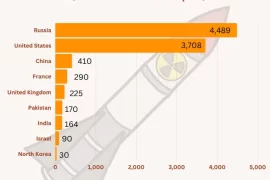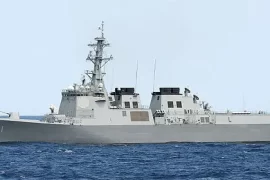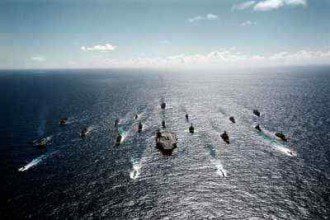The Philippines, a Southeast Asian archipelago, has a complex history of military collaboration and contention with the United States. Since the Spanish-American War in 1898, which resulted in the cession of the Philippines from Spain to the US, the Philippines has been a strategic location for American military bases in the Pacific region. Currently, there are 9 US military bases in the Philippines including Subic Bay Naval Base, Antonio Bautista Air Base, and Clark Air Base. In April 2023, the US gained access to four more bases in the Philippines.
This article examines the history and current status of US military bases in the Philippines, exploring the strategic goals behind their establishment, the challenges they have faced, and the implications for the Philippines, the United States, and the broader geopolitical landscape.
Establishment of US Military Bases in the Philippines
Following the Spanish-American War in 1898 and the Philippine-American War , the U.S. established several military bases in the Philippines. These bases served as key outposts for the U.S. military in the Pacific, enabling the projection of American power and influence in the region. They were strategically located for surveillance, intelligence gathering, and logistical support for U.S. military operations in Asia.
The history of U.S. military bases in the Philippines has been marked by periods of expansion, contraction, and transformation.
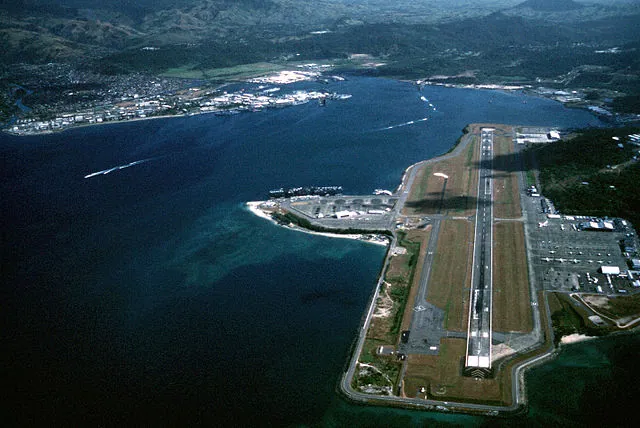
In the year 1900, the General Board of the United States Navy conducted a comprehensive examination of the naval base development plan in the Philippines. Subsequently, with an executive order by President Theodore Roosevelt in 1901, the United States established its inaugural military base in the country. A total of 2,800 hectares of land at Subic Bay became a military reservation for the US Navy.
Mutual Defense Treaty (MDT)
One of the cornerstones of the defense relationship between the US and the Philippines is the Mutual Defense Treaty (MDT) signed between the two countries on August 30, 1951. The MDT, which commits both countries to come to each other’s aid in case of an armed attack, has played a significant role in shaping their defense cooperation and regional security dynamics in the Asia-Pacific region.
Visiting Forces Agreement (VFA)
In 1991, due to rising anti-U.S. sentiments and the expiration of the base lease agreements, the Philippine government decided not to renew the lease on the bases, resulting in the closure of Subic Bay Naval Base and Clark Air Base. However, in 1999, the U.S. and the Philippines signed the Visiting Forces Agreement (VFA), which allowed for joint military exercises and training, and paved the way for the re-establishment of U.S. military presence in the country.
Enhanced Defense Cooperation Agreement (EDCA)
In recent years, there has been a push for the further expansion of U.S. military presence in the Philippines, driven by concerns over China’s assertiveness in the South China Sea.
In 2014, the U.S. and the Philippines signed an agreement called the Enhanced Defense Cooperation Agreement (EDCA), which enables the militaries of the two countries to train together, respond to natural and humanitarian crises, and achieve modernization goals.
The EDCA allows for an increased rotational but temporary presence of U.S. troops, aircraft, and ships in the Philippines. Under this agreement, the U.S. military has access to Philippine military facilities including airfields, ports, and training ranges, which are used for joint military exercises, training, and other cooperative activities.
Initially, the Philippines and the US identified five EDCA locations, i.e military bases, together. Those were Antonio Bautista Air Base, Basa Air Base, Fort Magsaysay, Lumbia Air Field and Mactan-Benito Ebuen Airbase. However, the Philippines retains de jure sovereignty and control over the EDCA sites. As per the statement from the US Embassy in the Philippines, a total of $82 million has been allocated as of March 20, 2023, for various projects to be carried out at the five designated sites.
On April 11, 2023, a joint statement was issued following the 3rd U.S.-Philippines Ministerial Dialogue in Washington, D.C. which revealed the plan for expanding the EDCA to include four new bases in Palawan and Northern Luzon. The four new US military bases in the Philippines are Balabac Island, Camp Mechor Dela Cruz Gamu, Lal-lo Airport, and Naval Base Camilo Osias.
The U.S. Department of Defense, according to the statement, would allocate over $100 million by the end of Fiscal Year 2023 for infrastructure investments at the new and existing EDCA sites.
This agreement has been met with mixed reactions from various stakeholders in the Philippines, with proponents arguing that it enhances the country’s defense capabilities and deterrence against potential threats, while critics express concerns over possible risks to Philippine sovereignty and national interests.
US Military Bases in The Philippines
A list of the US military bases in the Philippines
The 9 US military bases in the Philippines are
- Antonio Bautista Air Base, Palawan
- Basa Air Base, Pampanga
- Balabac Island, Palawan
- Camp Mechor Dela Cruz Gamu, Isabela
- Fort Magsaysay, Nueva Ecija
- Lal-lo Airport, Cagayan
- Lumbia Air Field, Cagayan De Oro
- Mactan-Benito Ebuen Airbase, Cebu
- Naval Base Camilo Osias, Cagayan
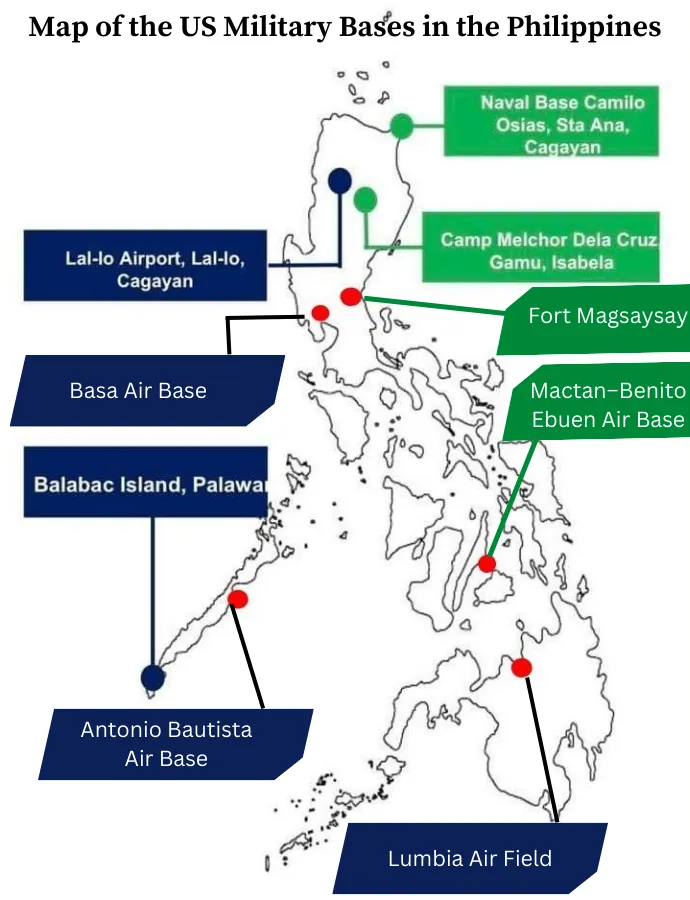
Strategic Goals for U.S. Military Bases in the Philippines
The establishment of U.S. military bases in the Philippines was driven by a combination of strategic, economic, and geopolitical motivations.
In the latter part of 1897 and early 1898, Assistant Secretary of the Navy Theodore Roosevelt and Senator Henry Cabot Lodge, a Republican from Massachusetts, exerted pressure on President William McKinley to recognize the geopolitical opportunities presented by the war with Spain. Their proposition was to seize Spain’s largest Asian colony, the Philippines, as a means of obtaining a strategic foothold to access China’s markets, justifying the buildup of the United States’ naval strength, and gaining recognition and respect from other imperial powers across the globe. (1)
Although the Philippines gained independence from the US in 1946, it continues to be a strong foothold for its former colonizer. Strategically, the military bases in the Philippines have been providing the U.S. with a forward presence in the Pacific, allowing for rapid response to potential threats in the region. Economically, the bases have been supporting American interests in trade and commerce and serving as a hub for logistics and transportation. Geopolitically, the bases were part of the U.S.’s broader strategy to contain communism during the Cold War, as the Philippines was seen as a key ally in the region. And, now, the bases are key strategic footholds for containing China.
The strategic placement of the new US military bases speaks loud about their strategic importance. Three of them are oriented towards Taiwan in the north, while one is located in close proximity to the disputed Spratly Islands in the South China Sea.
Challenges Faced by U.S. Military Bases in the Philippines
The U.S. military bases in the Philippines have faced various challenges over the years. One of the main challenges has been the issue of sovereignty and nationalism. The presence of foreign military bases on Philippine soil has been a contentious issue for many Filipinos who view it as a violation of their sovereignty and an infringement on their national pride. There have been protests, demonstrations, and calls for the closure of U.S. military bases in the Philippines, especially during times of perceived U.S. interference in Philippine domestic affairs.
There is protest there pic.twitter.com/XVtedkVbZm
— FatCat_Blue (@9992rc4g7c3939) April 11, 2023
Another challenge has been the issue of environmental concerns. The presence of U.S. military bases has been associated with environmental degradation, such as pollution and deforestation, which has had negative impacts on local communities and ecosystems. Additionally, there have been incidents of crime, accidents, and human rights abuses associated with the U.S. military personnel stationed in the bases, which have strained the relationship between the U.S. and the Philippines.
Impacts and Implications
The presence of U.S. military bases in the Philippines has had significant impacts on various stakeholders.
In terms of security, the U.S. military presence has been seen as a deterrent against potential threats in the region, particularly in the context of China’s assertiveness in the South China Sea. The joint military exercises and training under the VFA and EDCA have aimed to enhance the Philippines’ defense capabilities and interoperability with U.S. forces.
However, the presence of U.S. military bases has also been associated with negative social and environmental impacts. Reports of crime, accidents, and human rights abuses involving U.S. military personnel have strained the relationship between the U.S. and the Philippines, and have raised concerns about accountability and justice for affected communities. Environmental degradation, such as pollution and deforestation, resulting from the operation of military bases has also raised concerns about the sustainability of local ecosystems and livelihoods.
China’s Response to the Establishment of US Military Bases in the Philippines
The presence of U.S. military bases in the Philippines has implications for the broader geopolitical landscape in the Asia-Pacific region. These bases are a part of the US strategy to maintain its influence and presence in the region, particularly in the context of China’s rise as a global power. China has been vocal against the establishment and expansion of the US presence in its neighborhood.
In response to the disclosure of the locations of four new US military bases in the Philippines, Chinese Foreign Ministry Spokesperson Mao Ning remarked during a press briefing on April 4, 2023, stating, “Facts are very clear that the US has been increasing its military deployment in the region driven by a zero-sum mentality in pursuit of selfish interests. This would only lead to more tensions and less peace and stability in the region.”
Summary
The history of U.S. military bases in the Philippines is complex, with a long-standing relationship that has evolved over time. The establishment, challenges, and evolution of U.S. military bases in the Philippines reflect a multifaceted dynamic involving strategic, economic, geopolitical, social, and environmental factors.
While the presence of U.S. military bases has had impacts on various stakeholders, it remains a contentious issue that continues to shape the relationship between the Philippines and the United States, and has broader implications for regional security and geopolitical dynamics in the Asia-Pacific region.
As the landscape of global politics continues to evolve, the future of U.S. military bases in the Philippines will likely continue to be a topic of debate, negotiation, and careful consideration for both countries and the wider international community.
References
1. Kramer, Paul A. (2006). The Blood of Government: Race, Empire, the United States, and the Philippines. The University of North Carolina Press. Pg 91.
2. David, Leonard (1989). Revolutionary Struggle in the Philippines. Palgrave Macmillan.




